STEPS
INGREDIENTS

You've gone to the tidepools during mussel season (with your permit!) and harvested some wild mussels. Here's a step by step guide on how to process them.
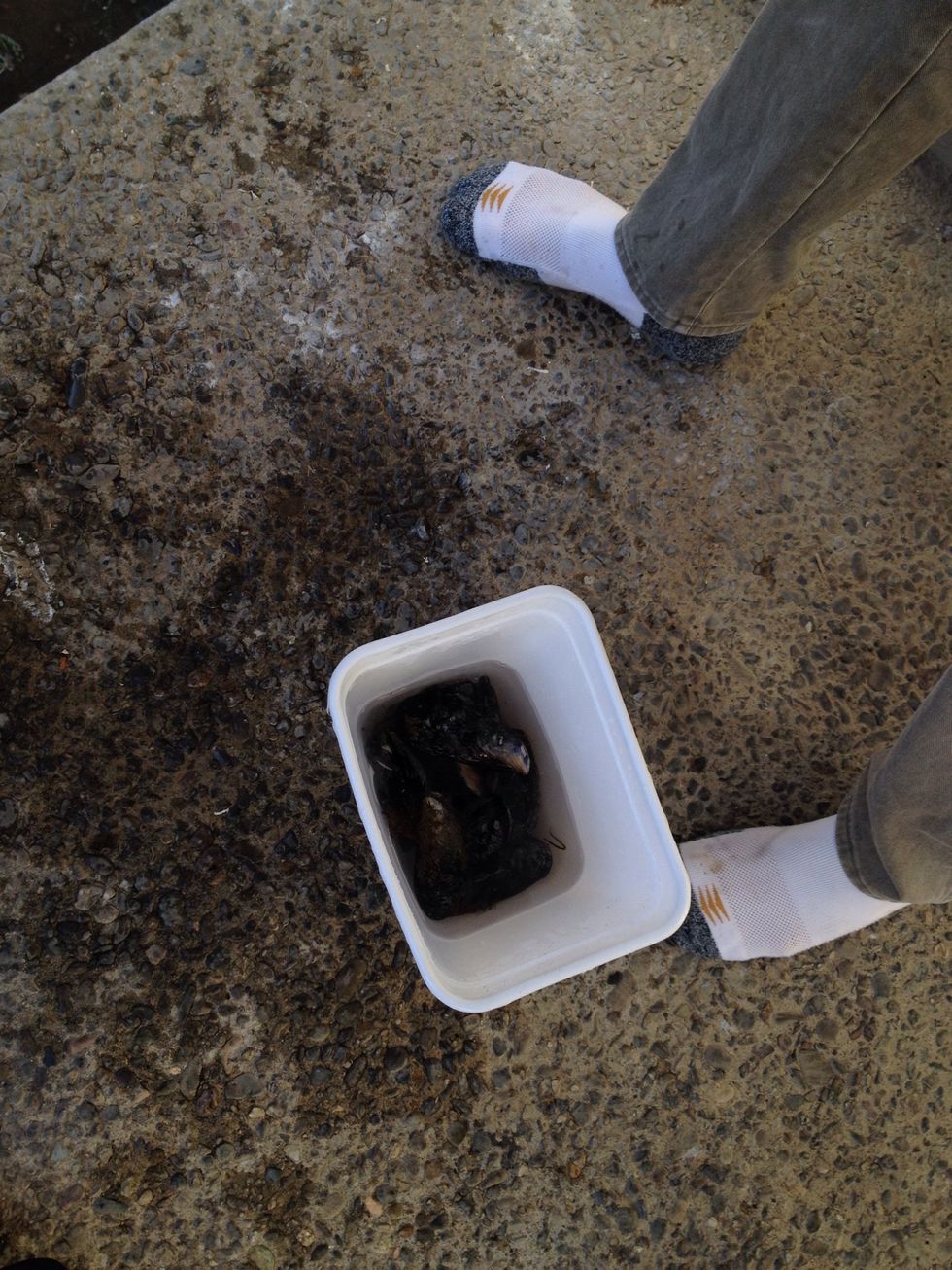
Storing before processing: Wild mussels will keep in a bucket left outside with fresh water and ice cubes, changed daily, for up to four days.
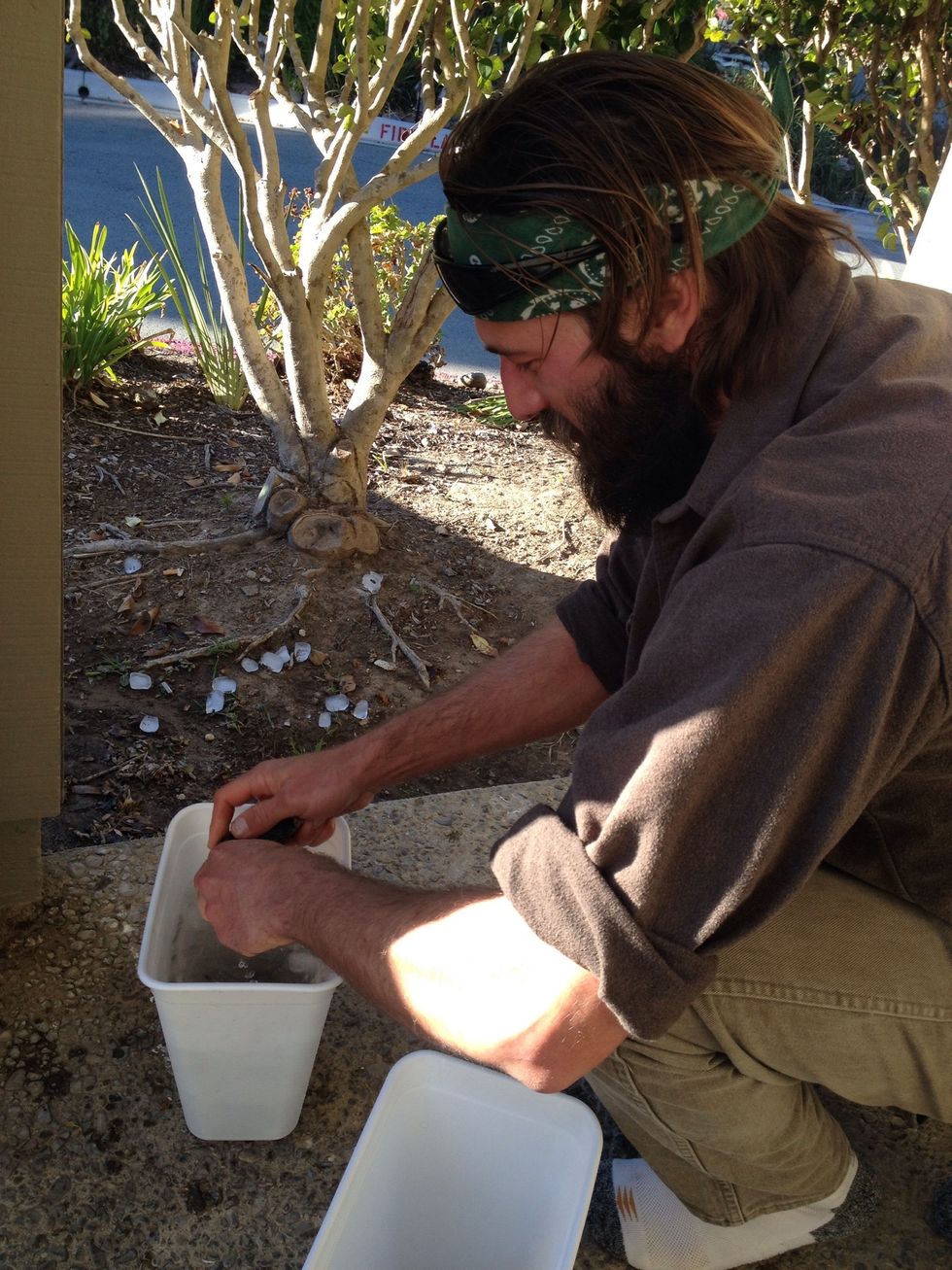
Clean shells: Wild mussels are often covered with smaller mussels, barnacles, anemones and more! An easy way to clean these off is to simply rub mussels against each other.

Clean shells, cont.: Use the sharp lip of one mussel as a scraper for the other. Don't worry about getting ALL debris off, just the big stuff. Pop cleaned mussels in second bucket.
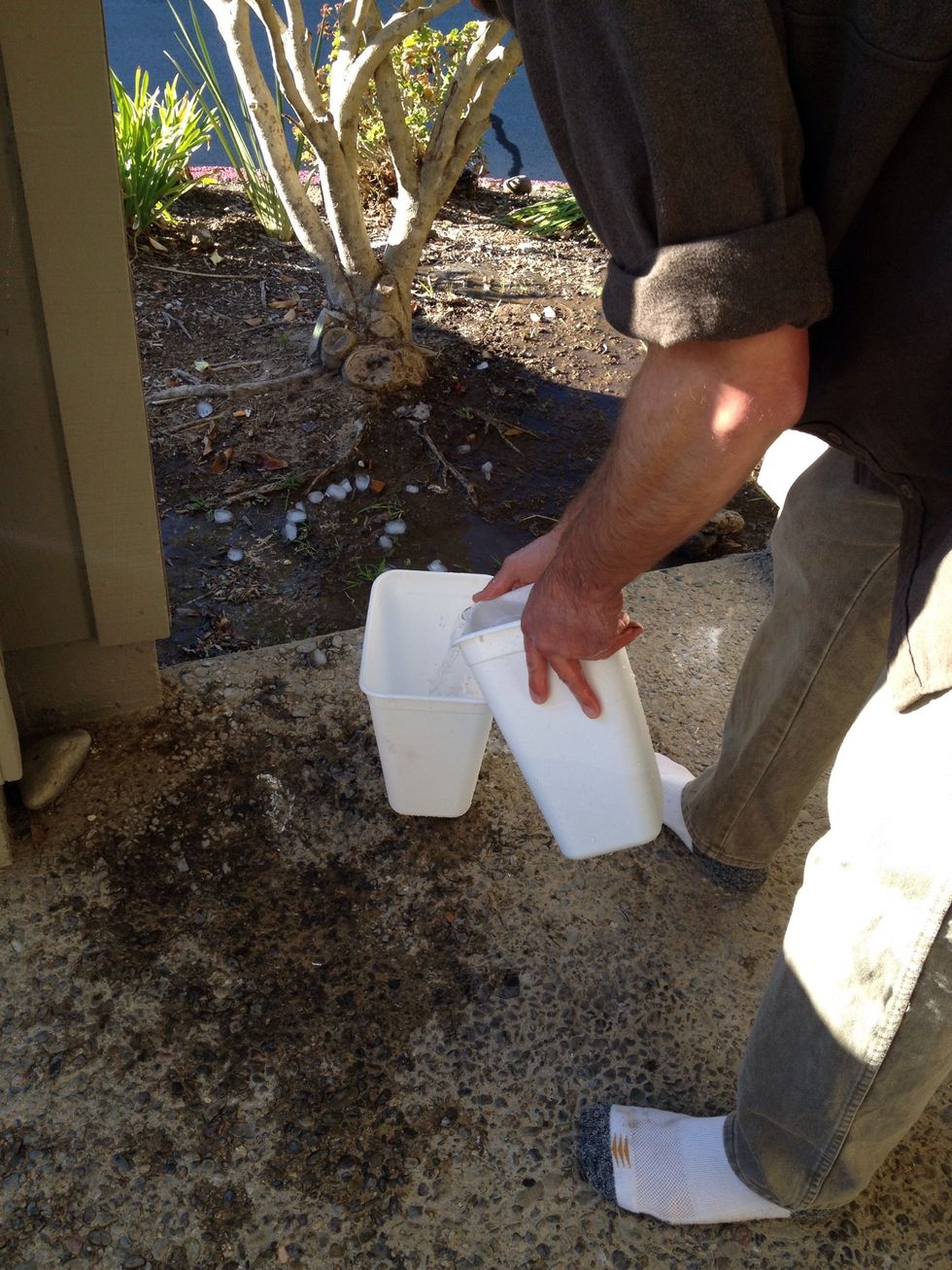
Clean shells, cont.: Pour fresh water (from hose if you have one) into bucket of scraped mussels and swirl around. Dump out and repeat. This helps loosen and rinse off further debris.
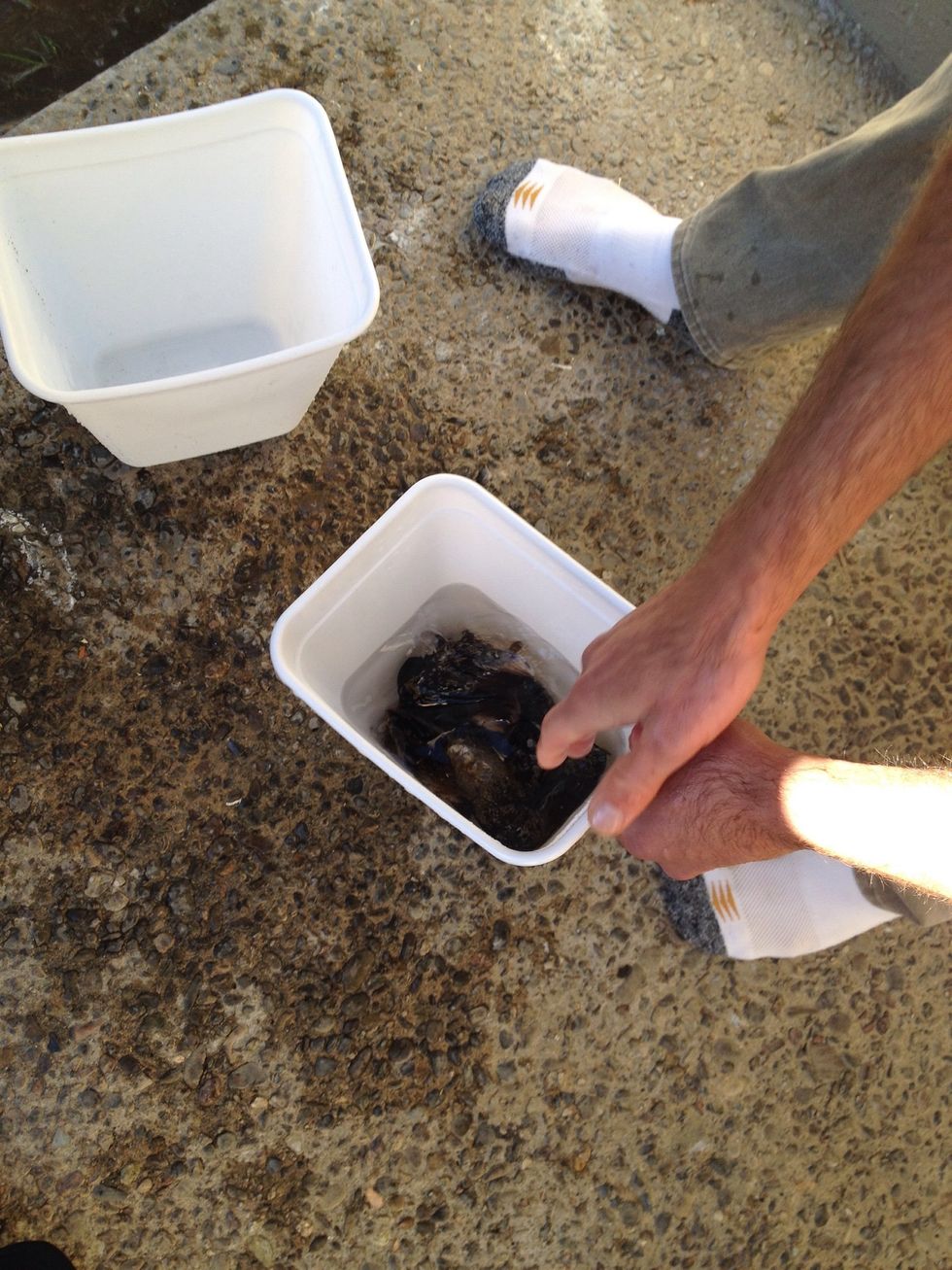
Now you're ready to bring your mussels inside to steam!

A steamer like this one works best.
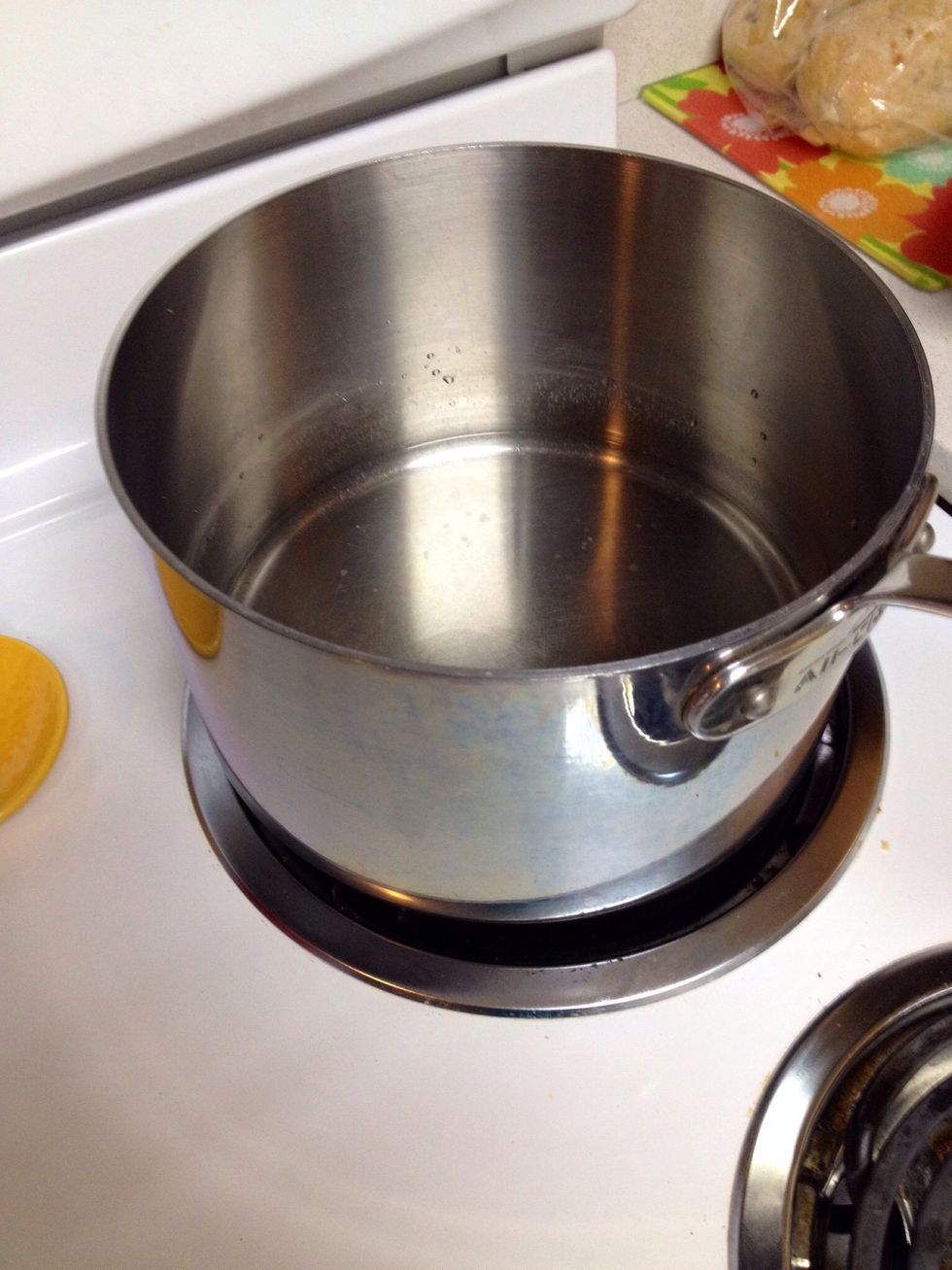
Pour about a half inch of water in bottom.
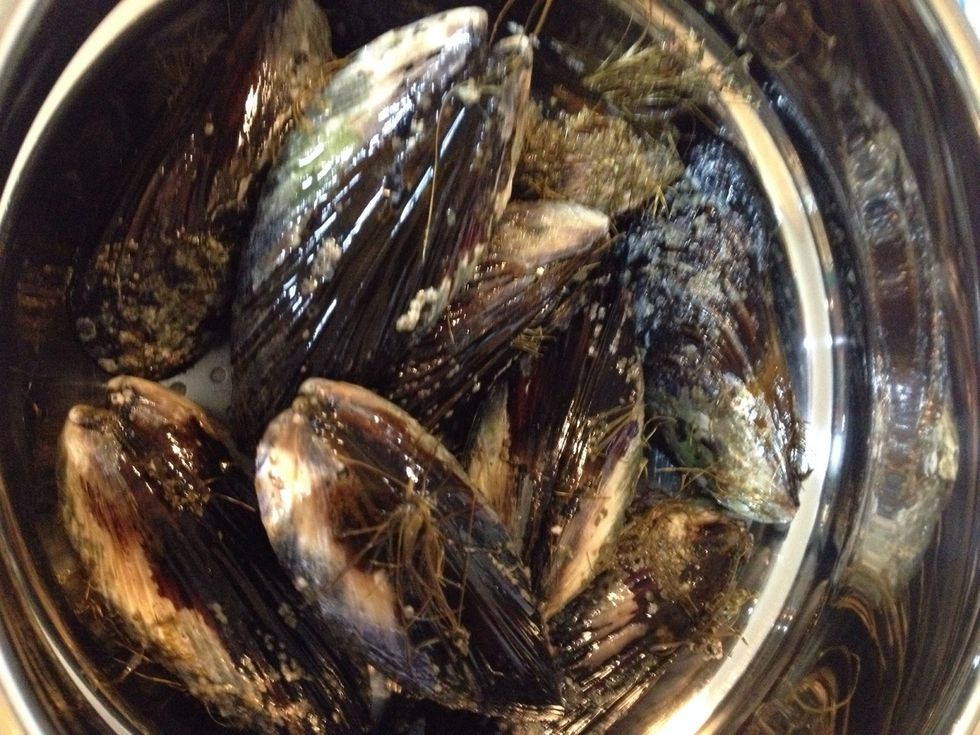
Place mussels in top chamber and steam medium high for about 10-15 minutes, or until mussels begin to open up. For best results, place "hot dog" style (longways) with flatter side facing up.
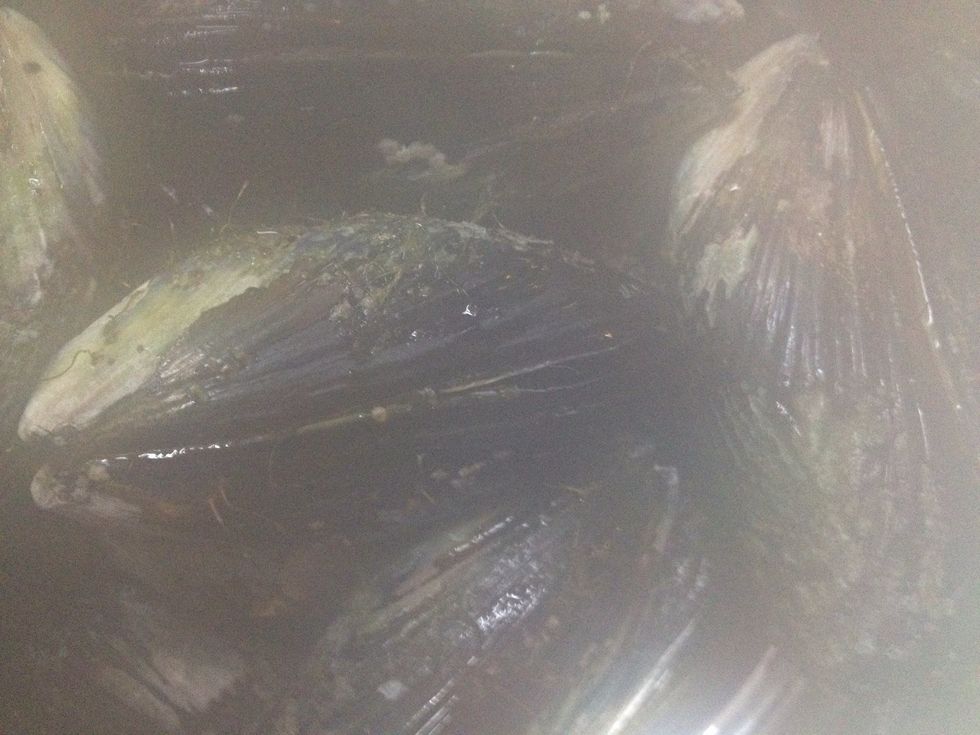
Mussels don't need to open too much, just a crack as pictured below will suffice. Pour white wine over mussels making sure wine gets inside cracks and steam for another five minutes.
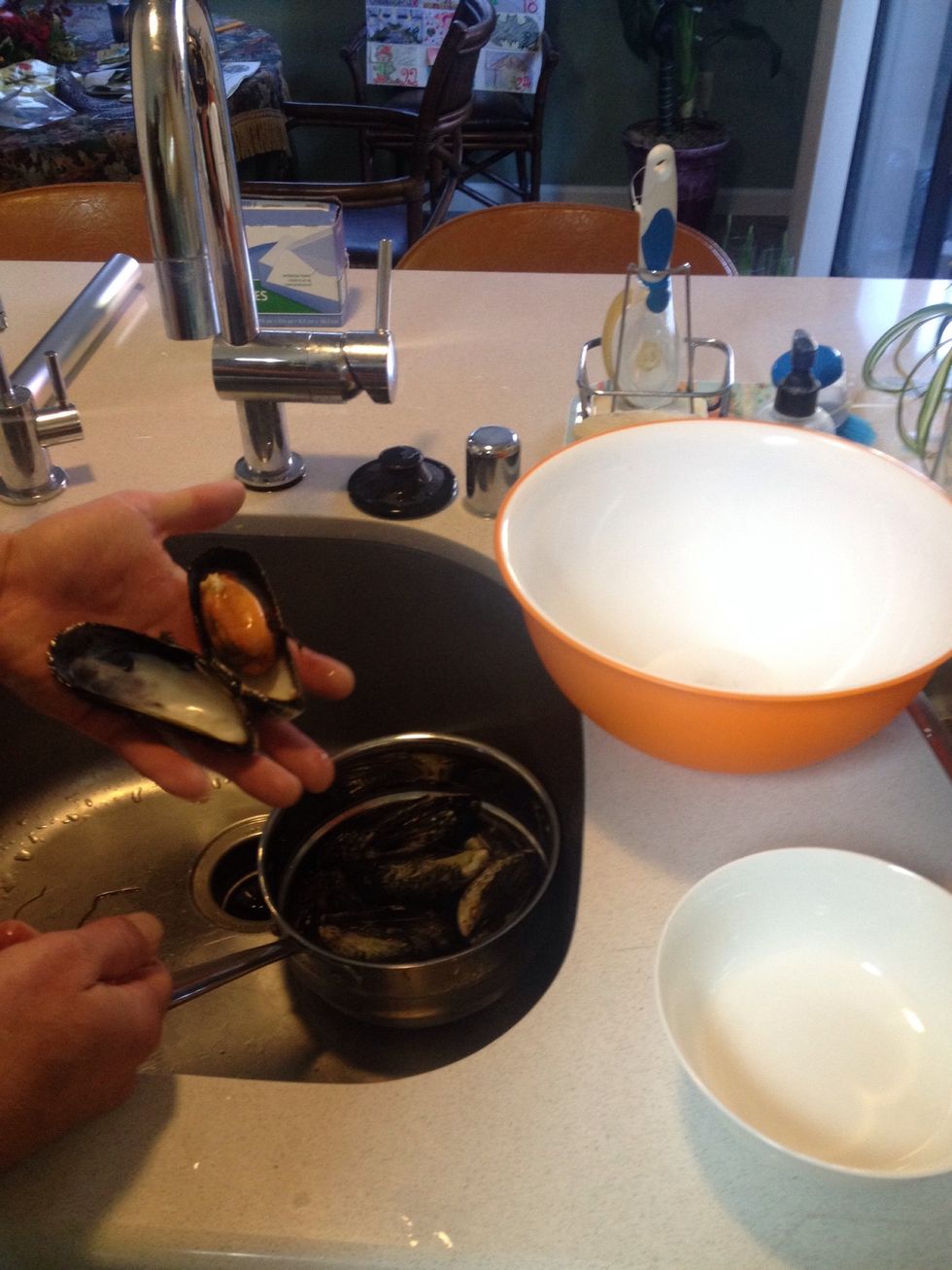
When most mussels have cracked open, take off stove and open each mussel up completely. It can take some effort! Save the "mussel juice" that has collected in the bottom pot for later.

It's time to pull each mussel off shell while also removing the big adductor muscle (which is what allows them to open and close). Place thumb and forefinger on either side of mussel, pulling firmly.
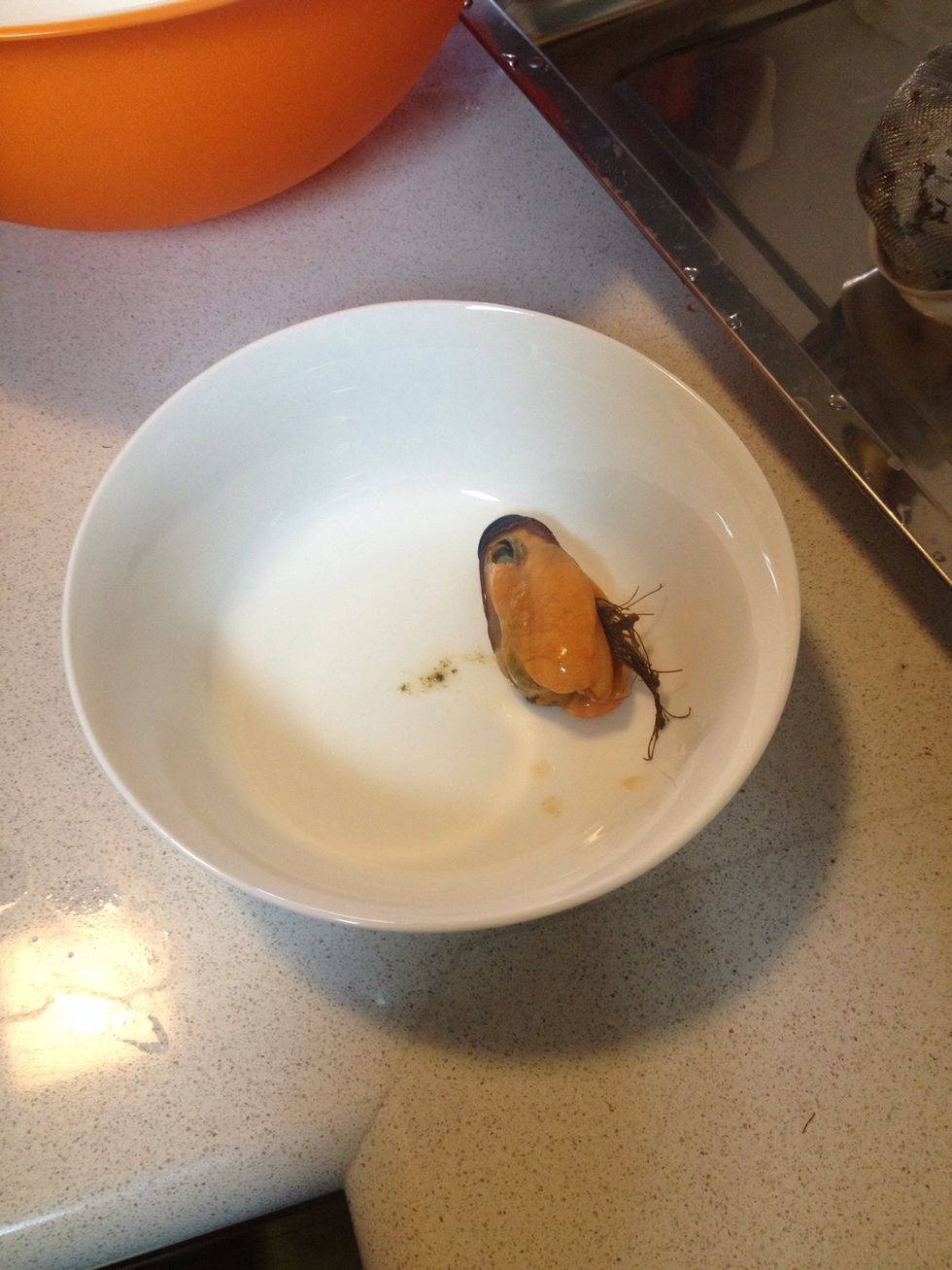
This is what your mussel will look like after you've completely this step. The place where the adductor was forms a circular hole.
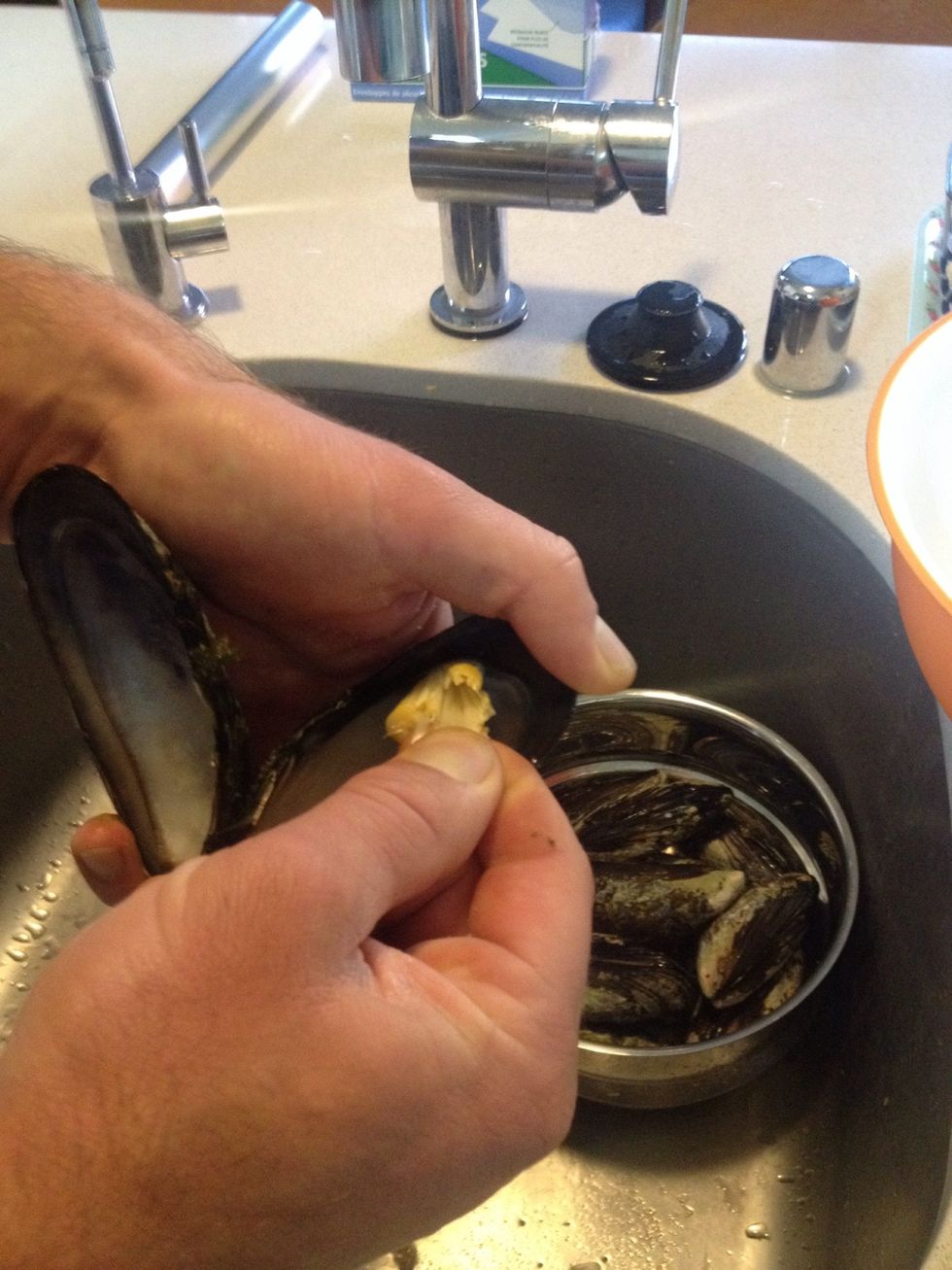
As you can see, the muscle is very tough and fibrous, not something we want to eat.
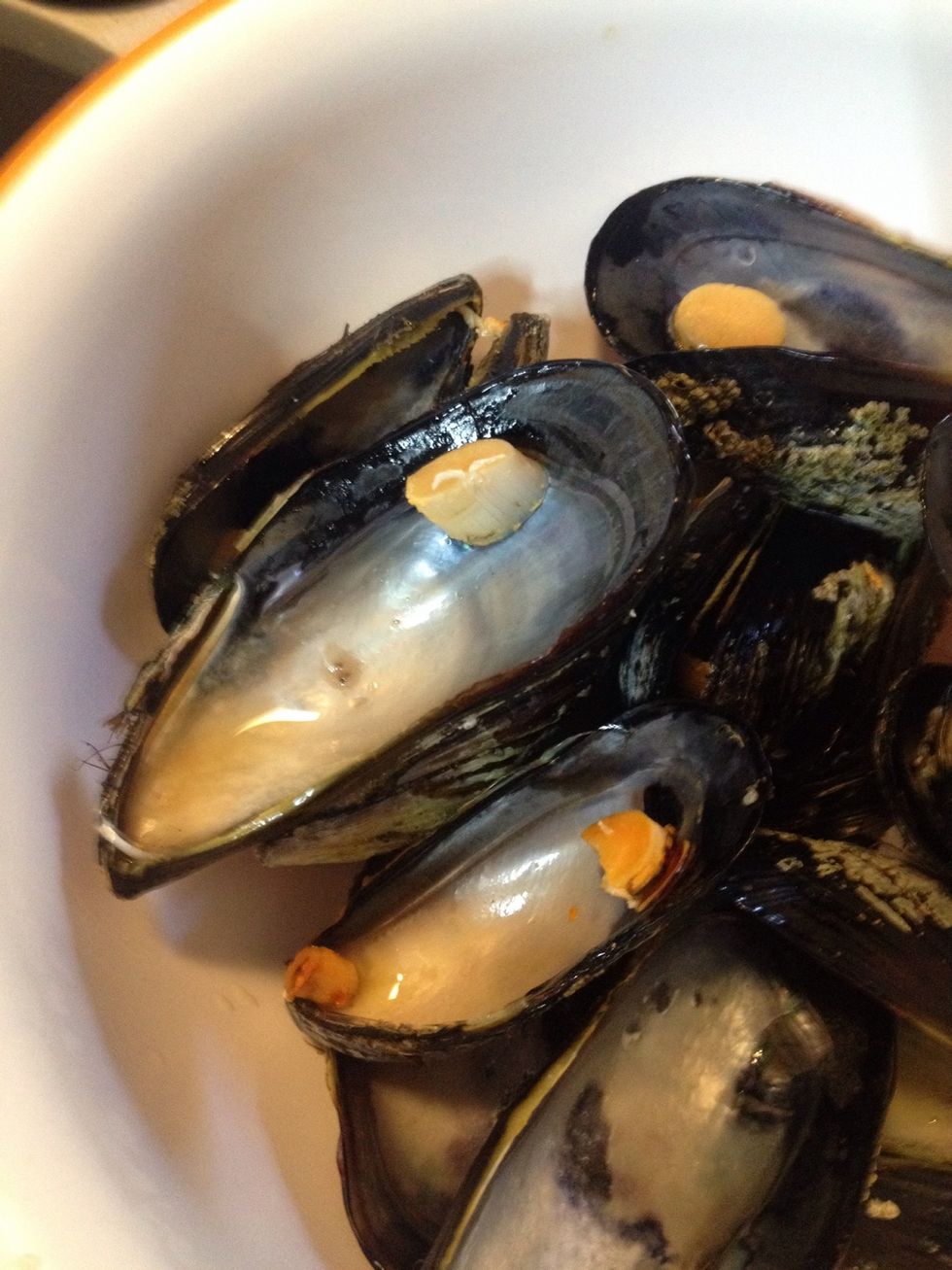
Leftover shells with adductor muscles attached, after mussels have been removed.
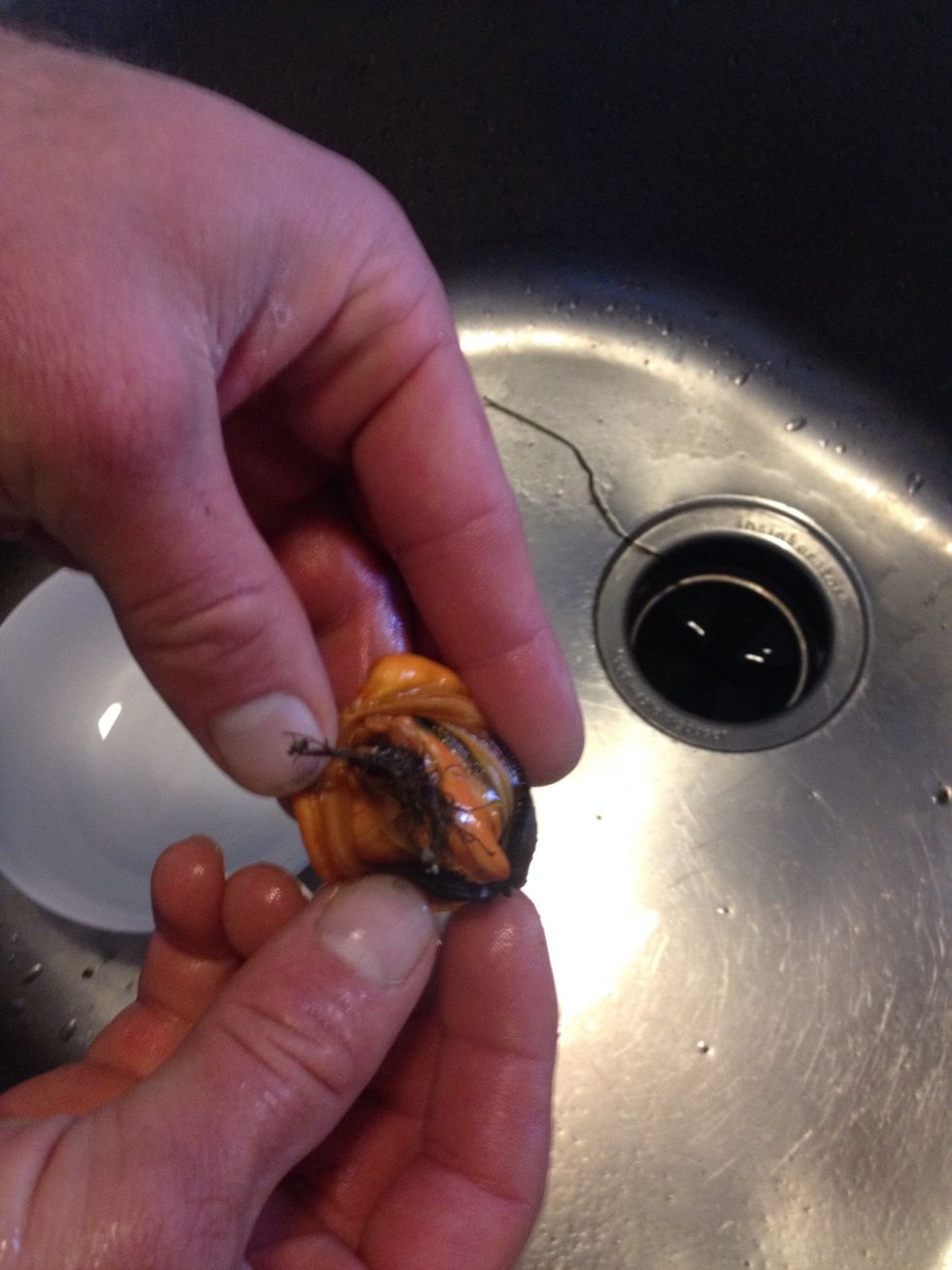
Next we pull out the "beard" (the byssus) and it's "roots." The beard is that stringy/hairy stuff you'll have noticed sticking out from the shells of the mussels.

Open the mussel up as shown, and find the "root" of the beard, and pull firmly to remove.

The beard after removal. The "byssal" threads are how mussels attach to rocks and other things.

The third step after the mussels have been steamed is to remove the stomach, which looks like a grainy, greenish pouch under the orange mussel flesh.
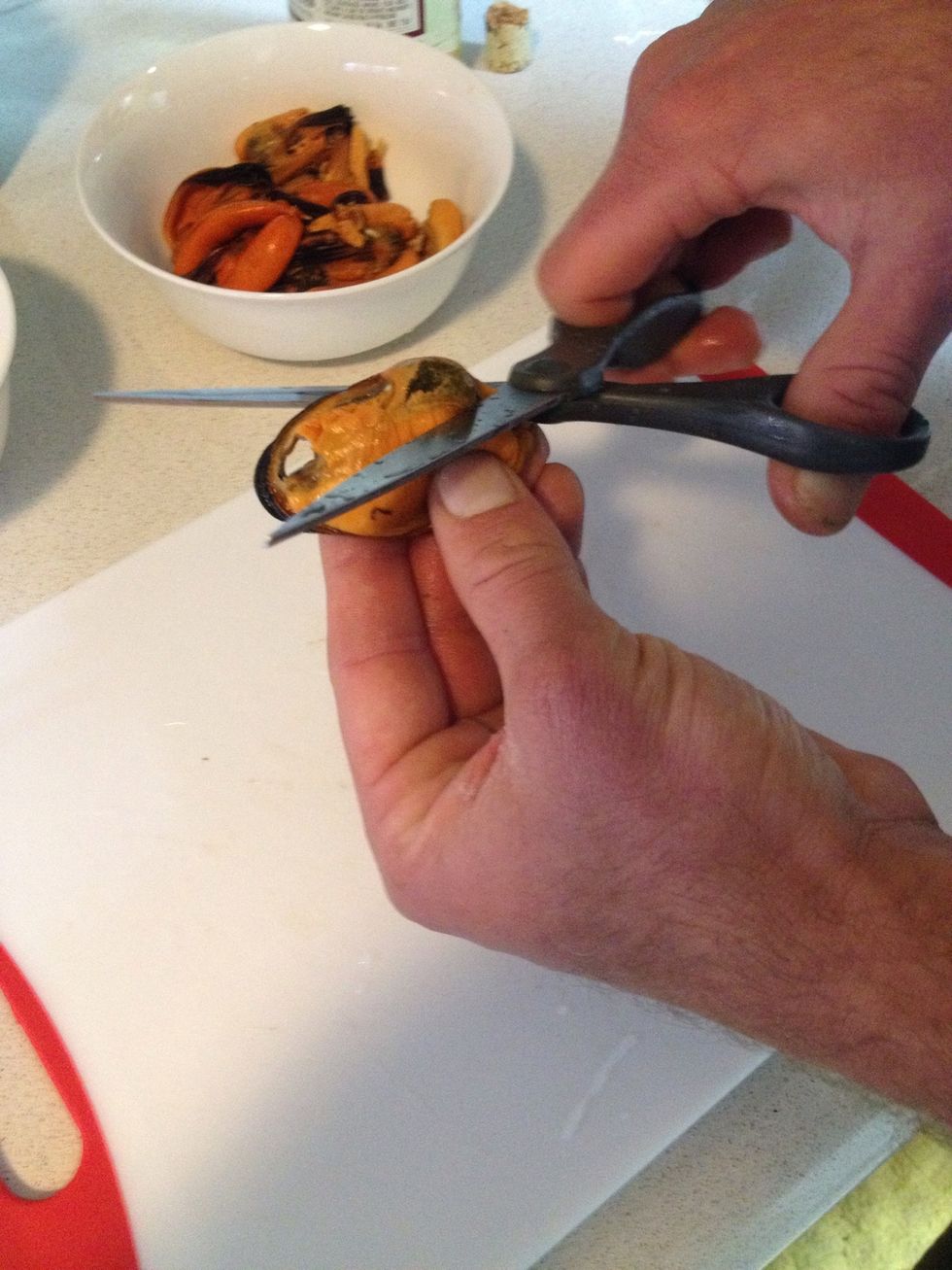
Hold mussel as depicted, pinching from the bottom to push stomach up, and cut a curved shape around the bottom to cut it out.
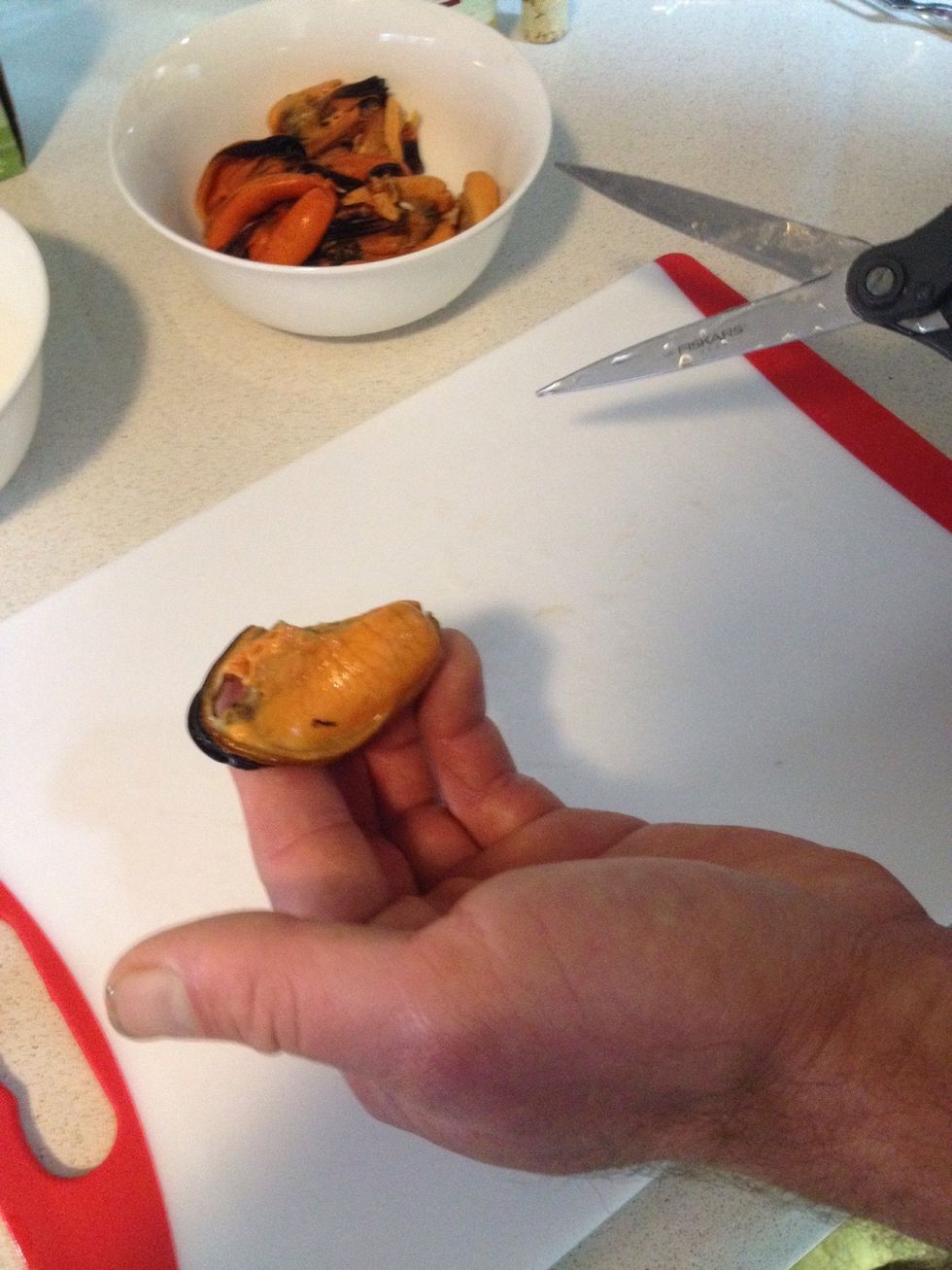
Your mussel, after removing adductor muscle, beard and attachments, and stomach. Almost ready to cook with or eat!
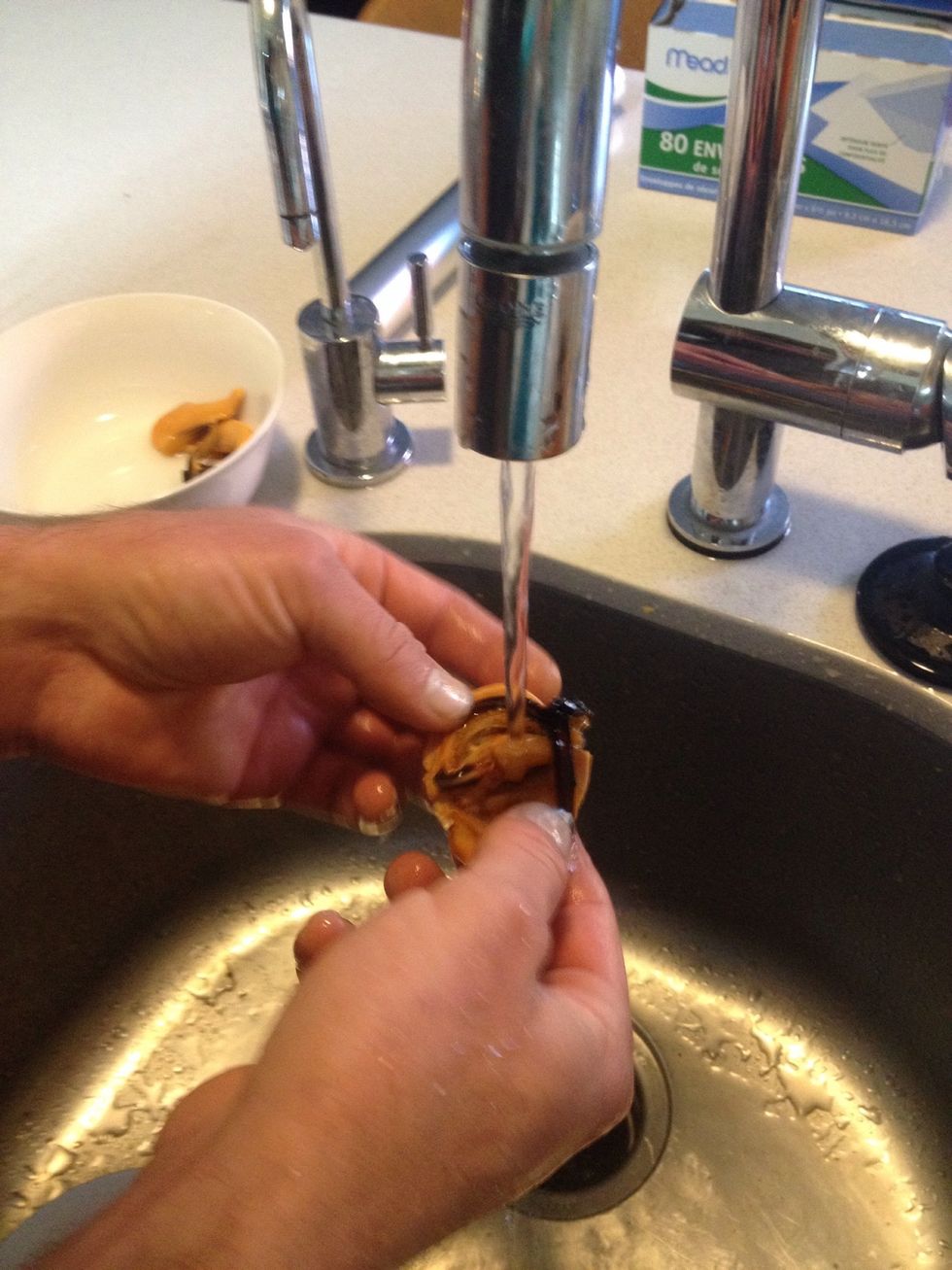
A last rinse of the mussel is a good idea to remove any remaining sand grains or grains from the stomach.
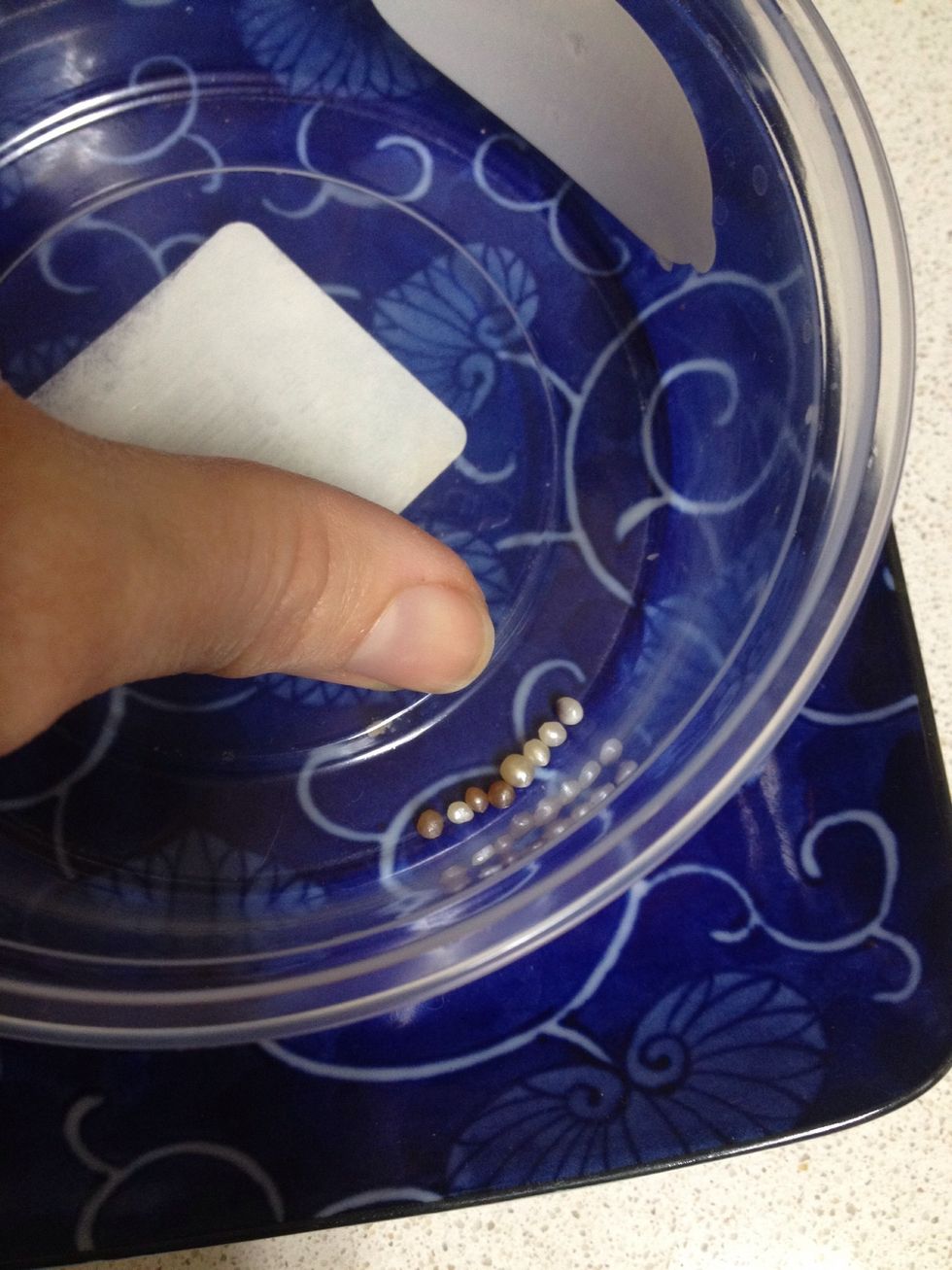
A note about pearls: Mussels sometimes form pearls which can be felt by running a finger over the sides of the cooked mussel and should be removed. They are tiny but beautiful.
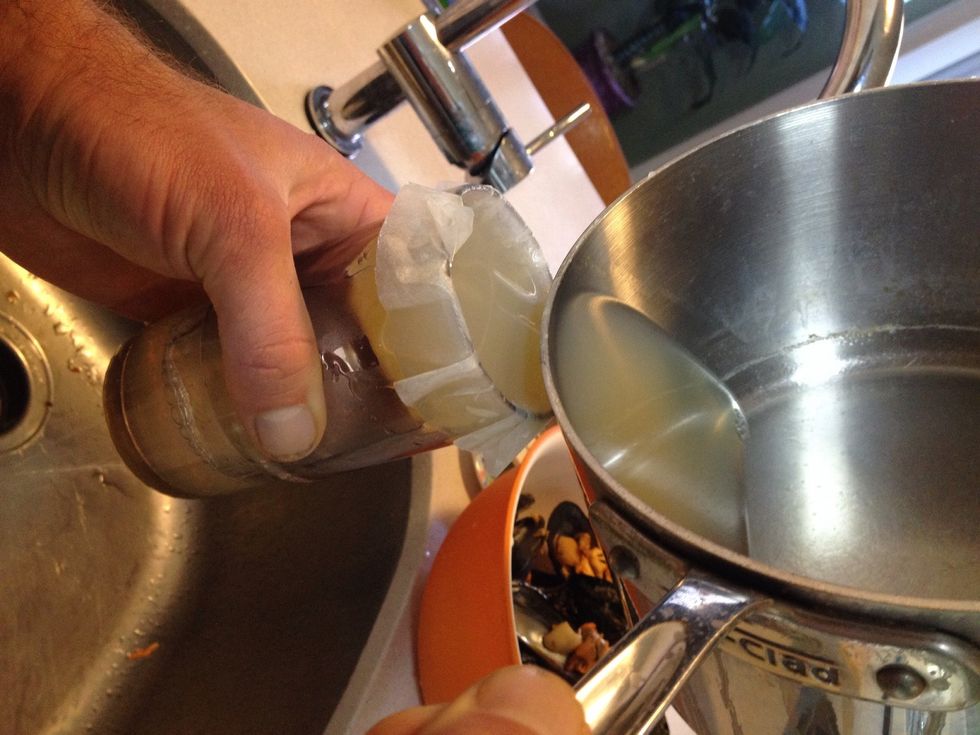
Optional step: filter mussel juice by pouring through a paper towel or coffee filter. This liquid, formed with water and wine in bottom of steamer, is great for cooking mussel chowder or soup.

Pour a little mussel juice over prepared mussels to add back some flavor and add a little lemon juice and/or raw garlic for extra flavor.

After letting mussels marinate for at least five minutes, you can enjoy them plain or add them to a soup.
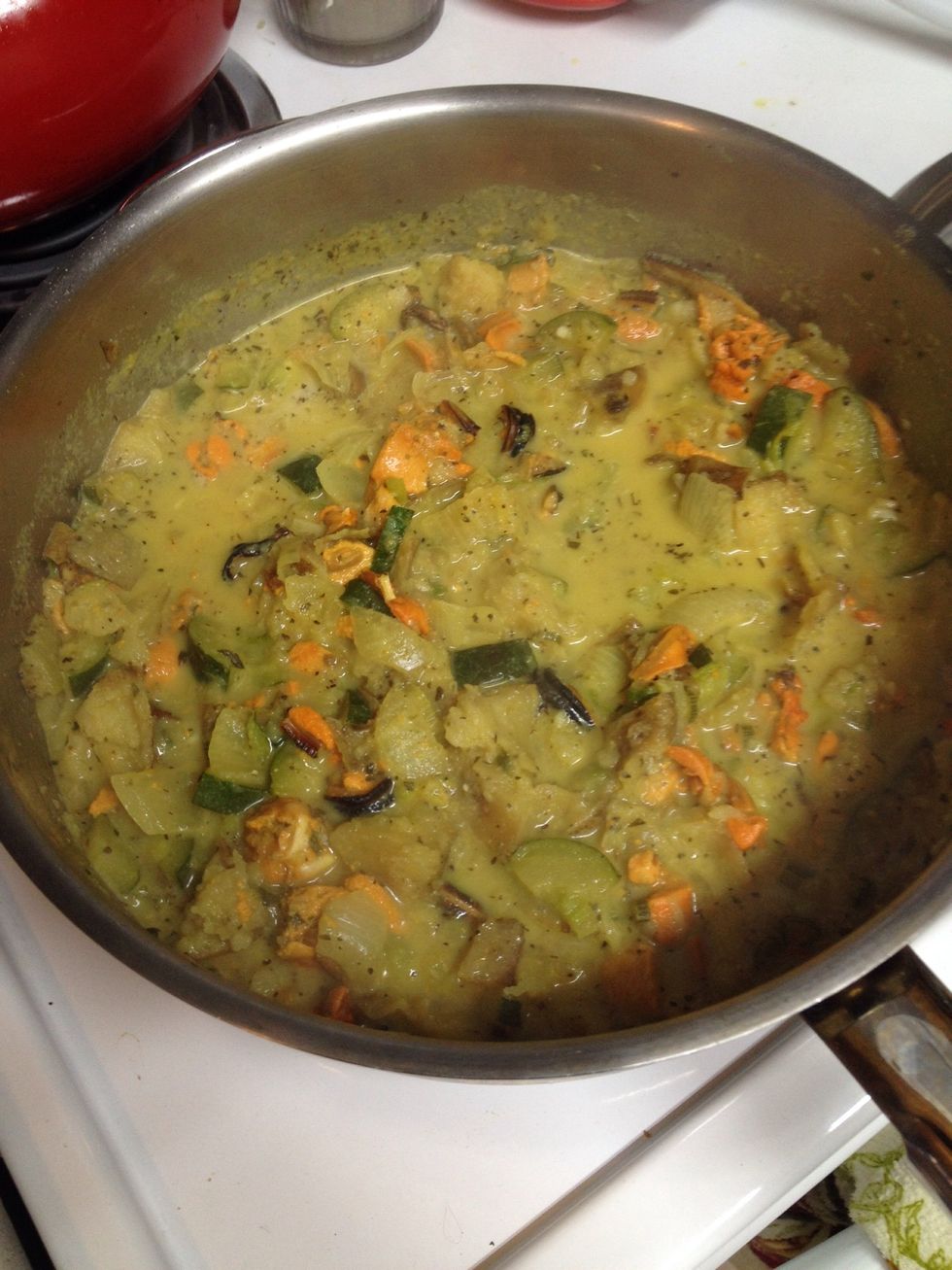
We improvised a mussel chowder with zucchini, onion, garlic, potatoes, a little turmeric, mussel juice, a splash of milk, and fresh ground pepper. No salt added! Enjoy your mussels!!
- 2.0 Buckets
- 10.0 Mussels
- Ice cubes
- Stove-top steamer or saucepan
- Scissors
- Dry white wine
- 3.0 Bowls
Danielle Crook
I love finding fun and creative ways to to make food, gifts and art on a micro budget!
http://crookscrafts.tumblr.com
www.facebook.com/crookscrafts
Santa Cruz California
The Conversation (0)
Sign Up